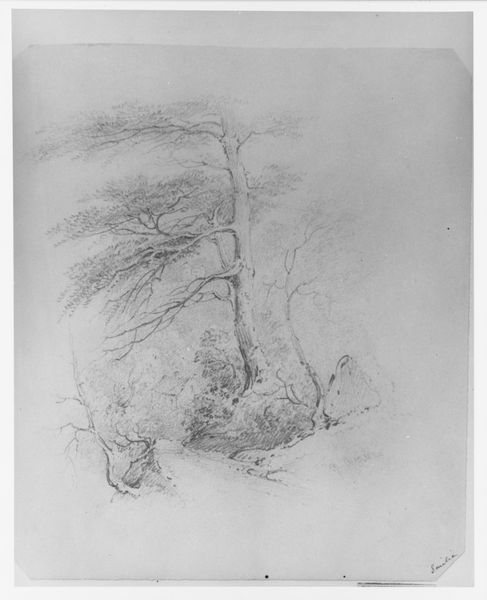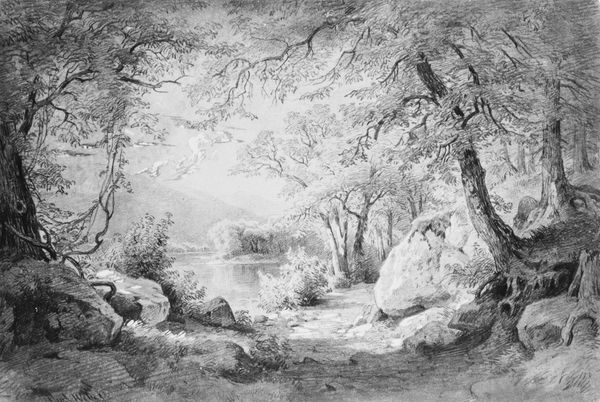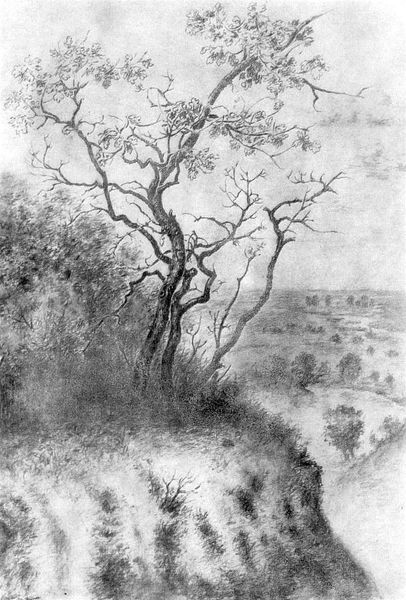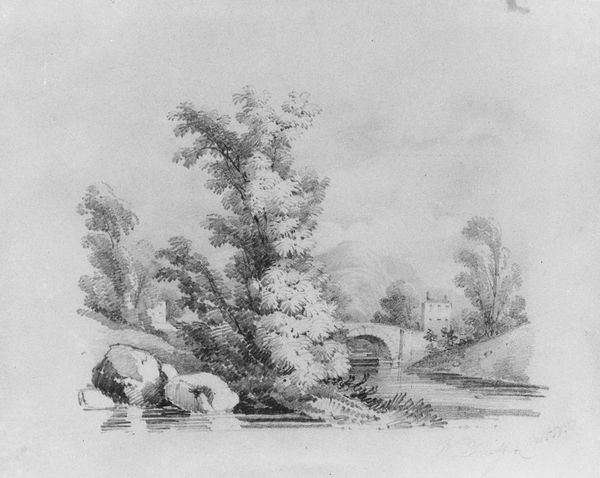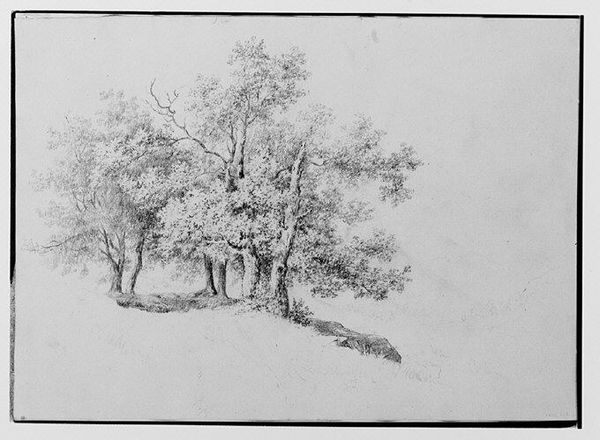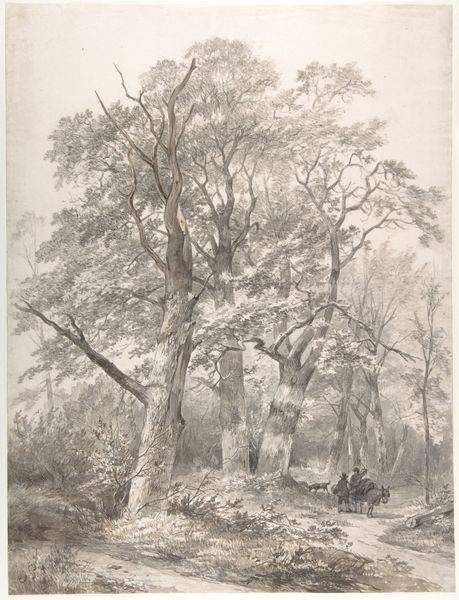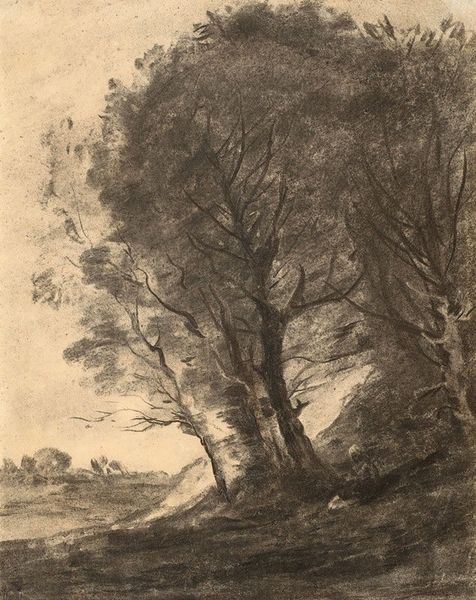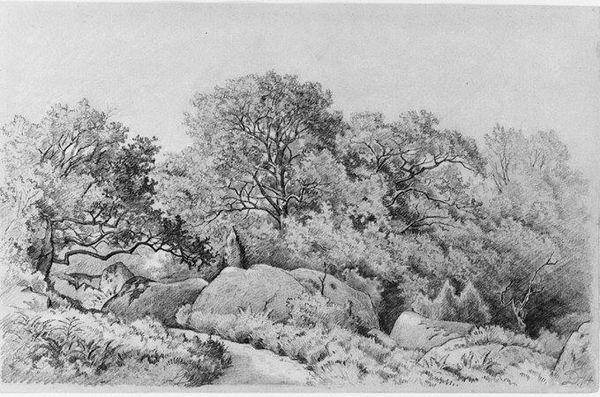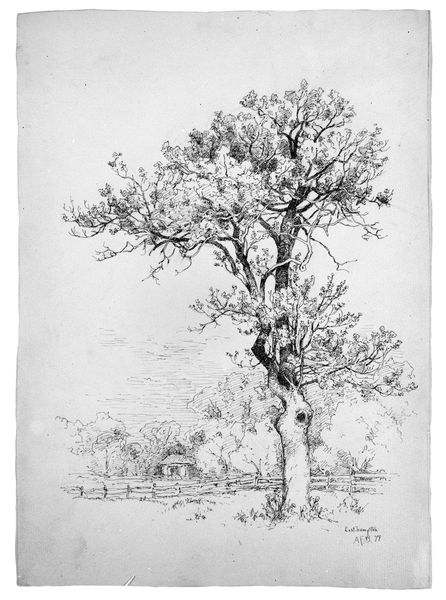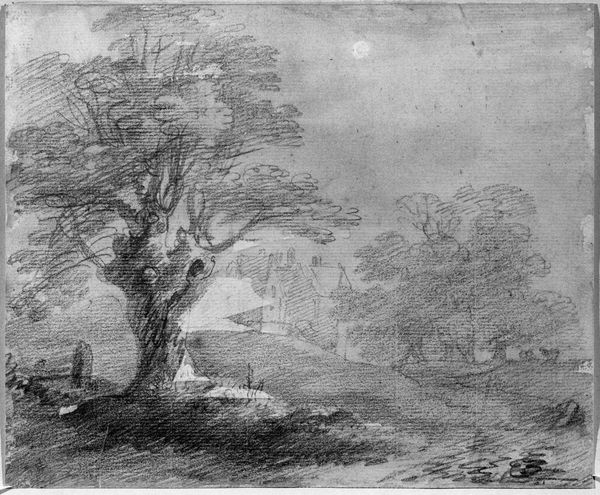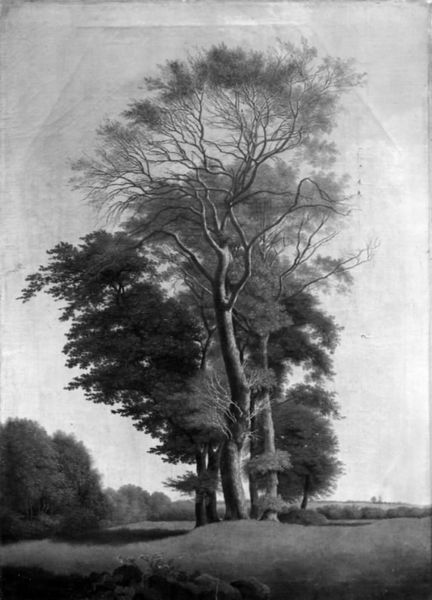
drawing, plein-air, paper, graphite
#
tree
#
drawing
#
plein-air
#
landscape
#
paper
#
nature
#
form
#
romanticism
#
graphite
#
realism
Dimensions: 7 7/16 x 5 13/16 in. (18.9 x 14.8 cm)
Copyright: Public Domain
Editor: So, this is Asher Brown Durand's "Landscape (from McGuire Scrapbook)," dating from 1796 to 1886, done in graphite on paper. It's interesting – almost ethereal in its depiction of the tree. What do you make of the materiality here? Curator: Notice how the graphite allows for a certain democratization of landscape depiction. Prior to mass-produced materials, landscape art was often reserved for the elite, commissioned in oils. Here, the accessibility of graphite allows Durand to engage with the natural world directly and intimately in *plein air*. This makes the process, the act of *making*, central to its meaning, democratizing both the subject and creation of art. Editor: That's a great point! So, the very choice of graphite impacts how we interpret the artwork? Curator: Precisely. Consider the societal context. As industrialization transformed the landscape, artists like Durand turned to nature, seeking solace and authenticity. Graphite, easily portable and affordable, became a vital tool in documenting and appreciating the disappearing natural world. His practice highlights the relationship between nature, material, and emerging industrial forces, yes? It reflects a growing awareness of nature as both subject and resource. What implications might that have for today's consumers? Editor: It highlights the raw process of translating observations. Thinking about the socio-economic aspect too really shifts the emphasis of the artwork. Thanks, this was eye-opening. Curator: My pleasure! Looking at the art-making process and materiality brings to light many implications regarding the accessibility and meaning of art.
Comments
No comments
Be the first to comment and join the conversation on the ultimate creative platform.
